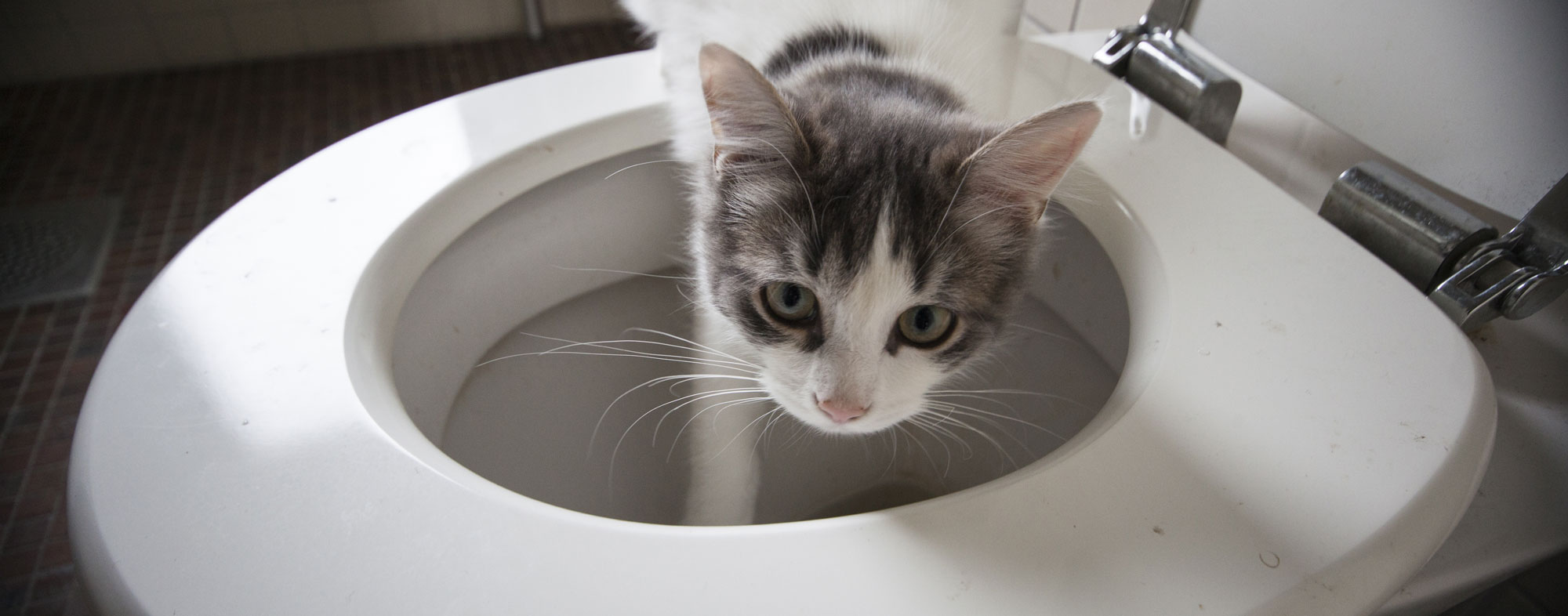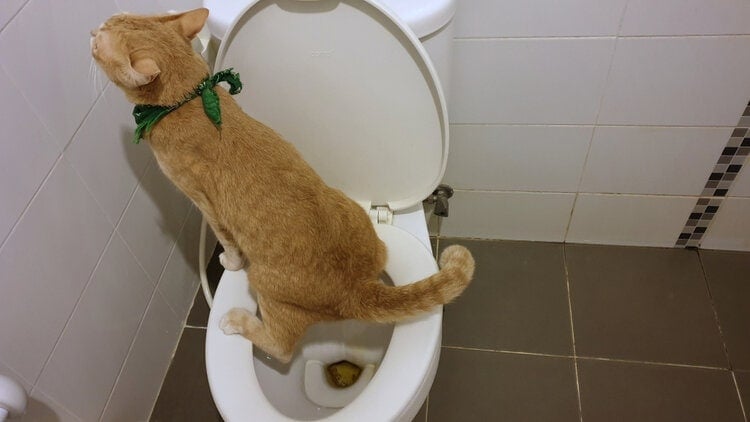Our Perils of Animal Waste in the Toilet
Our Perils of Animal Waste in the Toilet
Blog Article
Presented here further down you'll find lots of reliable news on the subject of Can You Flush Dog and Cat Poo Down the Toilet?.

When it involves dealing with waste, especially animal waste, many people commonly turn to the practical option of flushing it down the commode. Nevertheless, this seemingly very easy remedy can have major repercussions for the setting and public health. In this short article, we'll explore why flushing pet waste down the bathroom is a poor concept and give alternate methods for appropriate disposal.
Intro
Proper garbage disposal is essential for keeping environmental sustainability and public health. While it might seem harmless to flush animal waste down the toilet, it can result in various concerns, both for the atmosphere and human health.
Risks of flushing animal waste
Ecological impact
Flushing pet waste introduces hazardous germs and microorganisms into rivers, which can negatively affect water ecological communities. These microorganisms can infect water sources and harm marine life, interrupting fragile ecosystems.
Public health concerns
Pet waste includes unsafe germs such as E. coli and Salmonella, which can present significant wellness risks to human beings. Flushing pet waste down the bathroom can contaminate water materials, resulting in the spread of diseases and infections.
Alternatives to flushing
As opposed to purging pet waste down the commode, there are a number of alternative disposal techniques that are extra environmentally friendly and sanitary.
Composting
Composting pet waste is a green means to deal with it. By composting, organic matter is broken down into nutrient-rich dirt, which can be made use of to feed yards and plants.
Garbage dump disposal
Dealing with animal waste in a garbage dump is an additional alternative. While not as environmentally friendly as composting, it is a much safer alternative to flushing, as it protects against the contamination of water sources.
Animal garbage disposal systems
There are specific family pet garbage disposal systems offered that securely and hygienically take care of animal waste. These systems commonly utilize enzymes to break down waste and remove smells.
Actions to appropriate animal garbage disposal
To make certain appropriate disposal of animal waste, follow these steps:
Scooping and landing waste
Regularly scoop and bag pet waste making use of naturally degradable bags. This avoids waste from contaminating the setting.
Making use of marked waste containers
Dispose of bagged pet waste in more info marked waste bins, such as compost bins or garbage dump bins. Stay clear of flushing it down the toilet whatsoever costs.
Cleansing litter boxes and pet dog locations regularly
Frequently tidy can and pet dog locations to avoid the buildup of waste and microorganisms. Use pet-safe cleaning products to preserve hygiene.
Advantages of correct disposal techniques
Adopting correct disposal methods for animal waste uses several advantages:
Reduced environmental pollution
Proper disposal approaches lower the danger of environmental pollution, shielding waterways and ecological communities from contamination
Minimized risk of water contamination.
By avoiding flushing animal waste down the bathroom, the risk of water contamination is considerably lowered, safeguarding public health.
Boosted sanitation and hygiene
Correct disposal methods advertise better sanitation and health, developing a much safer setting for both human beings and pets.
Final thought
Finally, purging animal waste down the toilet is dangerous to the environment and public health. By embracing alternative disposal methods and complying with appropriate waste monitoring techniques, we can minimize the adverse influence of animal waste and contribute to a cleaner, much healthier earth.
What To Do With Dog Poo – The Do's And Don'ts Of Disposing Of Faeces
Dog poo bins
Some councils provide dedicated dog waste bins in popular dog-walking areas that can take dog poo that has been bagged but you can legally dispose of dog waste in any public litter bin, as long as it is securely bagged. This also applies to your wheelie bin at home.
Do not flush
Water companies do not recommend flushing dog faeces down the toilet because certain parasites can survive the water processing treatment and are potentially harmful to humans. You should also never consider flushing dog poo that has been bagged down the toilet as the bags will not break down and instead create severe blockages in the sewage system.
In the woods
The Forestry Commission promotes a ‘stick and flick’ method for dealing with waste in the woods. This means finding a stick and using it to flick any poo from off the path so that it is out of the way of other walkers. You could also bury it as long as it is not in an area where there might be livestock.
Livestock
Parasites found in dog poo can be transmitted to livestock if they inadvertently eat infected faeces that has been left on grazing land. This could result in the death of sheep or abortion in cattle so you should always make sure you pick up your dog’s waste in fields where livestock could be present.

Frequently tidy can and pet dog locations to avoid the buildup of waste and microorganisms. Use pet-safe cleaning products to preserve hygiene.
Advantages of correct disposal techniques
Adopting correct disposal methods for animal waste uses several advantages:
Reduced environmental pollution
Proper disposal approaches lower the danger of environmental pollution, shielding waterways and ecological communities from contamination
Minimized risk of water contamination.
By avoiding flushing animal waste down the bathroom, the risk of water contamination is considerably lowered, safeguarding public health.
Boosted sanitation and hygiene
Correct disposal methods advertise better sanitation and health, developing a much safer setting for both human beings and pets.
Final thought
Finally, purging animal waste down the toilet is dangerous to the environment and public health. By embracing alternative disposal methods and complying with appropriate waste monitoring techniques, we can minimize the adverse influence of animal waste and contribute to a cleaner, much healthier earth.
What To Do With Dog Poo – The Do's And Don'ts Of Disposing Of Faeces
Dog poo bins
Some councils provide dedicated dog waste bins in popular dog-walking areas that can take dog poo that has been bagged but you can legally dispose of dog waste in any public litter bin, as long as it is securely bagged. This also applies to your wheelie bin at home.
Do not flush
Water companies do not recommend flushing dog faeces down the toilet because certain parasites can survive the water processing treatment and are potentially harmful to humans. You should also never consider flushing dog poo that has been bagged down the toilet as the bags will not break down and instead create severe blockages in the sewage system.
In the woods
The Forestry Commission promotes a ‘stick and flick’ method for dealing with waste in the woods. This means finding a stick and using it to flick any poo from off the path so that it is out of the way of other walkers. You could also bury it as long as it is not in an area where there might be livestock.
Livestock
Parasites found in dog poo can be transmitted to livestock if they inadvertently eat infected faeces that has been left on grazing land. This could result in the death of sheep or abortion in cattle so you should always make sure you pick up your dog’s waste in fields where livestock could be present.

I hope you enjoyed reading our piece about Why you should never flush dog poop down the toilet. Thanks so much for taking the time to read through our piece of content. In case you enjoyed our page please be sure to share it. Kudos for being here. Return soon.
Or Book Technician Here Report this page